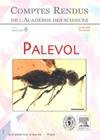打击乐起源于贝热拉克地区的古aurignacian: Barbas III, Vieux Coutets, Les Garris和Cantalouette II(多尔多涅,法国)的一些例子
IF 1.3
4区 地球科学
Q3 PALEONTOLOGY
引用次数: 4
摘要
为了说明早奥里尼亚期的冲击活动,我们从法国西南部贝尔热拉克地区的15个遗址中选择了4个遗址。这一地区的占领区富含高质量的燧石结核,其中一些具有令人印象深刻的形态和尺寸,显示了不同奥日尼亚期占领区之间的某种功能互补,从专门的占领区到栖息地遗址。除了技术上的特点,如生产大叶片(大于20厘米)或弯曲和直片状生产系统的共存,这个早期奥里尼亚纪也展示了一些显着的象征性行为,表现在身体装饰和艺术描绘上。在这些遗址中,用于发射打击的工具虽然总是存在,但代表了边缘工具类别,也显示出很大的多样性。人们已经认识到三大类工具:钝冲击工具、锐冲击工具和线性钝器(介于其他两种工具之间的一种中间形式)。每一组都是针对在这些职业的活动范围内的互补用途。钝冲击工具包括各种各样的锤石,根据其物理和机械性能,这些锤石可以参与不同阶段的打孔活动,例如打开新区块或重新配置岩心。此外,这些锤子留下的痕迹在遗址上留下的其他文物上也很明显,比如雕刻的末端刮刀的凹槽。锐冲击工具包括在层流生产中获得的不同毛坯(预成形件、皮质薄片、刀片)上制造的各种切割工具。这些工具呈现出活动或综合部件的特定形态功能结构,无论是天然的还是人造的,它们本质上基于质量改善了人体工程学。这种人体工程学与发射冲击的动力学相结合,使这些工具在切割介质和硬有机材料方面具有很高的效率。最后,线性钝器由一个具有钝器线性活动带的单一工具表示,该钝器由角度在85°至115°之间的开放二面体形成。用这种工具进行的活动似乎不同,它有反复撞击的痕迹,类似于用于研磨、敲打或粉碎的工具上的痕迹,这也表明铁砧的存在。这些工具通常与植物的转化有关。这种多样化的冲击工具是对其他切割和切割工具活动的补充。这再次说明了在这个地点进行的各种活动,基本上是有机易腐材料(植物和动物来源)的获取和转化,有助于证明Bergeracois的早期Aurignacian职业比简单的燧石作坊要复杂得多。本文章由计算机程序翻译,如有差异,请以英文原文为准。
La percussion lancée dans l’Aurignacien ancien du Bergeracois : quelques exemples issus des sites de Barbas III, Vieux Coutets, Les Garris et Cantalouette II (Dordogne, France)
In order to illustrate the launched percussion activities during the Early Aurignacian, we have selected four of the 15 sites appertaining to this technocomplex in the Bergerac region, in Southwestern France. The occupation of this territory, very rich in good quality flint nodules, some of which display imposing morphologies and dimensions, shows a certain functional complementarity between the different Aurignacian occupations, from the specialized occupation to the habitat site. In addition to technological particularities, such as the production of large blades (greater than 20 cm) or the coexistence of curved and straight lamellar production systems, this Early Aurignacian also illustrates some remarkable symbolic behavior expressed in body ornaments and artistic depictions. In these sites, the tools used in launched percussion, although always present, represent a marginal tool category, showing also a great diversity of functions. Three major classes of tools have been recognized: blunt impact tools, sharp impact tools, and linear blunt tools (an intermediate form between the other two). Each of these groups is oriented towards complementary uses within the range of activities made in these occupations. The blunt impact tools comprise a wide range of hammer-stones that take part in different phases of knapping activities, such as the opening of new blocks or the reconfiguration of cores, according to their physical and mechanical properties. Also, the traces left by these hammers are visible on other artifacts left on the sites, such as notches of carinated end-scrapers. The sharp impact tools comprises a diversified range of cutting tools made on different blanks (preforms, cortical flakes, blades) obtained in laminar production. These tools present a particular morpho-functional structure of active or prehensive parts, natural or made, that improves an ergonomy essentially based on mass. This ergonomy, combined with the kinetics of launched percussion, gives these tools a great efficiency in chopping medium and hard organic materials. Finally, the linear blunt tools is represented by a single tool with blunt linear active zones, formed by open dihedrals with angles between 85 and 115°. The kind of activity made with this tool seems different, it bears traces of recurrent impacts similar to those present on tools used for grinding, pounding or crushing, suggesting also the presence of an anvil. These tools are very often associated with the transformation of plants. This panoply of diversified percussive tools complements the activities perceived on the other cutting and scrapping tools. This, again, illustrates the variety of activities made at this sites, basically the acquisition and transformation of organic perishable materials (of plant and animal origins), contributing to demonstrate that the Early Aurignacian occupations of the Bergeracois are much more complex thansimple flint workshops.
求助全文
通过发布文献求助,成功后即可免费获取论文全文。
去求助
来源期刊

Comptes Rendus Palevol
地学-古生物学
CiteScore
2.10
自引率
0.00%
发文量
39
审稿时长
17.6 weeks
期刊介绍:
Comptes Rendus Palevol is a fully electronic and peer-reviewed journal, with a continuous publication stream, devoted to palaeontology, prehistory and evolutionary sciences. It publishes original research results, in French or English, in the following domains: systematic and human palaeontology, prehistory, evolutionary biology and macroevolution, and history of sciences. Thematic issues may also be published under the responsibility of a guest editor. All articles published in Comptes Rendus Palevol are compliant with the different nomenclatural codes. A copyright assignment will be signed by the authors before publication.
 求助内容:
求助内容: 应助结果提醒方式:
应助结果提醒方式:


